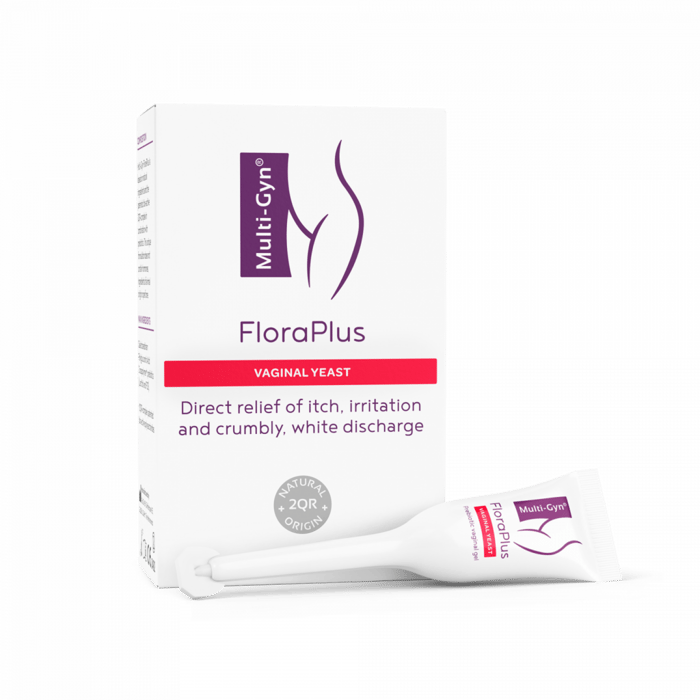Vaginal Discharge
Are you worried about your vaginal discharge?
While it is completely normal for your vaginal discharge to change throughout the month, there are certain colours and consistencies that may indicate an infection or underlying condition.
Within the below guide, we will talk you through each type of vaginal discharge, some of which are perfectly normal and others that may require further investigation.
Read on to discover:
What does healthy vaginal discharge look like?
Healthy vaginal discharge is typically either clear or milky and should have a subtle odour that is not unpleasant. Throughout your menstrual cycle, the consistency of your vaginal discharge is likely to change.
Some of the factors that affect the consistency and colour of your discharge include:
- Ovulation
- Menstrual flow
- Menstruation
- Sexual activity and arousal
- Exercise
- Use of contraceptives
Some women experience discharge every day, whereas others only have it a few times a month.
During pregnancy, most women experience thin and milky vaginal discharge due to the cervix creating more mucus and higher oestrogen levels.

What are the different types of vaginal discharge?
As mentioned earlier, vaginal discharge can change in both colour and consistency. Some colours and consistencies indicate a healthy vagina, and others may indicate an infection or other health concerns.
White discharge
In most cases, white discharge is perfectly normal, especially at the beginning and near the end of your menstrual cycle. However, if you have thick, white discharge that appears clumpy or has a cottage cheese-like consistency, then this may be a sign of a yeast infection.
Clear discharge
If your discharge is clear and watery, this is a sign of good vaginal health. You may notice an increase in clear discharge at certain points of the month and after exercise, but again this is perfectly normal. When you are ovulating, your clear discharge may become stretchy and mucus-like. This is also normal.
Brown discharge
Brown discharge or discharge that is bloody is common during and directly after your menstrual cycle. You may also experience brown discharge throughout your cycle. This is known as spotting and the recommendation is to visit the doctor for an examination.
It is also fairly common for women to experience pink vaginal discharge before a period.
However, if you experience spotting when you usually have your period, this may be a sign of early pregnancy or of a miscarriage.
In rare cases, brown or bloody discharge can be a sign of cervical or endometrial cancer. Make sure that you have regular smear tests and book an appointment with your GP if you continue to experience brown or bloody spotting or if you are in pain.
Yellow or Green discharge
Yellow or green discharge is usually a sign of an infection, especially if the change in discharge is also accompanied by an unpleasant smell or it is unusually thick and/or clumpy.
If you have had unprotected sex, and you have green or yellow vaginal or you have smelly discharge, you may have caught a sexually transmitted disease.
What are the main causes of vaginal discharge?
Vaginal discharge is completely normal and helps to keep your vagina clean and healthy. Throughout the month, your vaginal discharge will change due to factors such as ovulation and sexual arousal.
That being said, vaginal discharge can also be caused by an infection that, in most cases, will need treatment.
Read on to discover the main causes of vaginal discharge and when you should seek treatment.
A yeast infection
A yeast infection, also known as vaginal thrush, is incredibly common and affects around 75% of women at some point in their lives.
Easily recognisable by white, thick, and clumpy discharge that often resembles cottage cheese, a yeast infection can also cause itching, burning, and redness.
While some people are more prone to yeast infections than others, the following factors can increase your risk of getting thrush:
- Stress
- Diabetes
- Birth control pills
- Pregnancy
- Prolonged use of antibiotics
You can buy over-the-counter tests for a yeast infection at most supermarkets and pharmacies, or you can make an appointment with your GP, who will be able to diagnose thrush for you.
Bacterial vaginosis (BV)
Another common infection in women, bacterial vaginosis typically manifests itself as a strong-smelling discharge that often has a distinct fishy odour. BV discharge is usually white, but it can sometimes be yellow or green.
Women who have multiple sexual partners are more likely to experience BV as sperm can upset the delicate balance of the vagina and cause a fishy-smelling discharge.
You can buy over-the-counter home tests and solutions for BV such as Multi-Gyn Actigel, or you can book an appointment with your GP for a test.
Trichomoniasis
Trichomoniasis is an infection that is much rarer than other sexual infections such as chlamydia. It is caused by a protozoan and is mostly often passed on from sexual contact, although it can also be spread by sharing towels or bathing suits.
Trichomoniasis can make your discharge become yellow or green, and it can also cause a foul-smelling vaginal discharge. Although some people do not have any symptoms, trichomoniasis can also cause pain, inflammation, and itching.
If you are worried that you may have contracted trichomoniasis, you should make an appointment with your GP or local GUM clinic.
Chlamydia
Chlamydia is one of the most common sexually transmitted diseases and often comes with no symptoms, especially in the early stages.
If you do experience any symptoms, these are often similar to other sexually transmitted infections such as gonorrhoea or trichomoniasis. Some of the most common symptoms of chlamydia include pain, a burning sensation when urinating, and abnormal discharge that may be yellow or green.
If you think you may have contracted chlamydia, you should book an appointment with your GP or GUM clinic as soon as possible because, if left untreated, chlamydia can cause serious health problems and even infertility.
Gonorrhoea
Gonorrhoea is a sexually transmitted infection that is caused by the bacterium Neisseria gonorrhoeae. You can contract gonorrhoea through vaginal, anal, and oral sex, and it can affect areas of the body, including the female reproductive tract, vagina, anus, eyes, and urethra.
The symptoms of gonorrhoea can seem very similar to a yeast infection or bacterial infection and may include watery, creamy, or green vaginal discharge, pain when urinating, pain during sex, and/or pain in the lower abdomen.
If you think you may have contracted gonorrhoea, you should book an appointment with your GP or local GUM clinic, as treatment is needed to get rid of gonorrhoea.
Pelvic Inflammatory Disease (PID)
Pelvic inflammatory disease is an infection that is most commonly spread through sexual contact. It is an infection of the female reproductive organs and can be caused by the same bacteria as chlamydia and gonorrhoea.
PID can be very dangerous if left untreated and can even be life-threatening. Some of the most common symptoms of PID include a foul-smelling discharge, pain in the lower abdomen, pain in the upper abdomen, pain during sex, pain when urinating, and irregular bleeding.
If you think you may have pelvic inflammatory disease, you should get medical attention as soon as possible.
HPV or cervical cancer
The human papillomavirus (HPV) is an infection that is spread via sexual contact, and it can lead to cervical cancer. Often people with HPV do not have any symptoms, but it can cause a bloody, brown, or watery discharge.
You can detect cervical cancer with routine smear tests and HPV testing.
How to treat abnormal discharge
Vaginal discharge is completely normal and helps to keep your vagina clean and healthy. The treatment needed for abnormal discharge will be dependent on its cause. Most causes of vaginal discharge can be easily treated with the right treatment.
A yeast infection
A yeast infection, also known as vaginal thrush, is incredibly common and affects around 75% of A mild yeast infection can sometimes go away on its own, but if you are experiencing unpleasant symptoms such as vaginal itching and soreness, you can get over-the-counter thrush treatments. These can be taken orally or inserted directly into the vagina. You do not need a prescription for thrush discharge medication.
Bacterial vaginosis (BV)
You may want to try a natural product like Multi-Gyn ActiGel, an over-the-counter alternative to antibiotics that supports the good bacteria and offers instant relief from bothersome BV symptoms. BV is sometimes treated with a course of antibiotics which you can obtain from your GP or nearest sexual health clinic. Many women have been helped by effective over-the-counter treatments as well. The downside with antibiotics is that they wipe out both beneficial and harmful bacteria in the vagina, which disrupts the bacterial balance and increases the risk of getting another infection.
Trichomoniasis
Trichomoniasis requires a course of antibiotics. It will not go away on its own. Most people are prescribed an antibiotic called metronidazole which is highly effective at treating trichomoniasis.
You will need to visit your GP or sexual health clinic to receive treatment for trichomoniasis.
Chlamydia
Chlamydia is the one of the most common sexually transmitted diseases and often comes with no Chlamydia can be easily treated with a course of antibiotics. Typically, you will be prescribed doxycycline, which you will need to take for one week, or azithromycin which is taken for 3 days.
Gonorrhoea
Gonorrhoea is usually treated with a single antibiotic injection, either in the buttocks or thigh. You are likely to have to attend a follow-up appointment 1-2 weeks after treatment to check that the infection has completely gone.
Pelvic Inflammatory Disease (PID)
If diagnosed early enough, PID can be treated with antibiotics. As PID is usually caused by a variety of different bacteria, you are likely to be given a mixture of different antibiotics. In severe cases, you may have to be admitted into hospital and given antibiotics intravenously.
HPV or cervical cancer
In most cases of HPV, no treatment is needed. Most typically, the infection will have been cleared up by your body in 2 years. However, treatment is needed if you experience problems such as genital warts or changes to cells in the cervix.
When to seek treatment for vaginal discharge?
Most of the time, vaginal discharge is completely normal and does not require further investigation or treatment. However, if you notice that your vaginal discharge has changed in colour or consistency and is accompanied by other symptoms, it can be a good idea to make an appointment with your GP or sexual health clinic.
Symptoms you should look out for include:
- A high temperature
- Lower or upper abdominal pain
- Sudden weight loss
- Increased urination or pain/burning when urinating
What to expect during an examination for vaginal discharge?
If you have abnormal vaginal discharge, you can make an appointment with your GP, or you can visit your nearest sexual health clinic. During your appointment, you can expect a physical examination, including a pelvic exam. This will not cause any pain, but some women find the experience a little uncomfortable.
The doctor or healthcare professional will also ask you questions about your symptoms, your menstrual cycle, and your sexual activity.
Your doctor may be able to diagnose you on the spot, or they may need to send a sample of your discharge for further tests.
How to keep your vagina healthy
To maintain a healthy vaginal discharge and to prevent future infections, there are several home care practices that you can adopt, including:
- Practice safe sex
- Wear breathable cotton underwear
- Avoid perfumed soaps and gels
- Get regular cervical screenings
If you notice any changes to your vaginal discharge or you start to experience any other unpleasant symptoms, do not avoid going to the doctor. The sooner you can get a diagnosis, the sooner you can get the right treatment and avoid more serious health problems.
Vaginal Discharge FAQs
What vaginal discharge is normal?
Normal vaginal discharge is usually clear or milky white and is likely to have a subtle aroma that is neither pungent nor unpleasant. It is normal for vaginal discharge to change at different times of the month, such as when you are ovulating and menstruating. Your vaginal discharge can also change and increase in amount when you are engaged in sexual activity.
What discharge colours mean?
The colour of your vaginal discharge can help you to determine whether or not your vagina is healthy. Normal discharge is either clear or milky coloured and should have a subtle odour. Yellow vaginal discharge can be a sign of an infection, especially when accompanied by a foul-smelling odour. Thick, clumpy white discharge that resembles cottage cheese is often an indication of a yeast infection.
When should I be concerned about discharge?
If your vaginal discharge suddenly changes in colour or consistency, particularly if it becomes yellow or green or starts to smell unpleasant, you may have picked up an infection. Book an appointment with your GP or at your nearest sexual health clinic, who will be able to advise you on any treatment needed.
What is the reason for white discharge?
A thick, white discharge can occur throughout your menstrual cycle and is completely normal. Just before you start to ovulate, this discharge may become waterier, and during ovulation it may become think and mucus-like.
Thick and clumpy white discharge that resembles cottage cheese can be a sign of a yeast infection. A white or grey discharge that has a fishy odour can be a sign of bacterial vaginosis.








